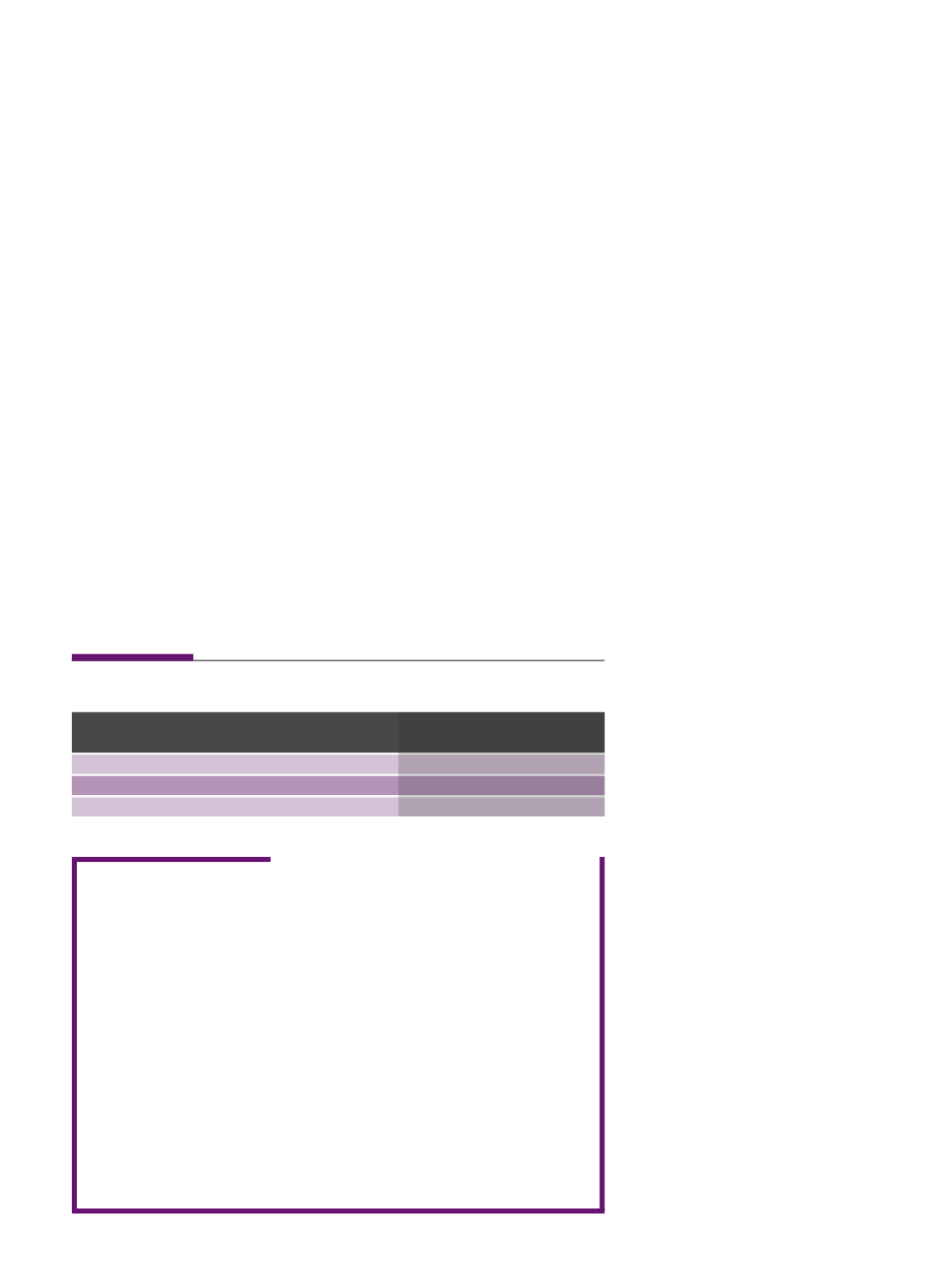
High jump (and long
jump
)
The most exported fruits from Brazil
showed positive results in 2017, contribut-
ing towards the sales of US$ 812.846 mil-
lion in revenue and 861.501 thousand tons,
outstripping the results of the previous year.
Mangoes and melons ranked first and sec-
ond, as usual, with respective values of US$
205.111 million and 162.916 million, ac-
cording to data from the Agrostat System
of the Ministry of Agriculture, Livestock and
Food Supply (Mapa). The next positions,
in dollar terms, were occupied by grapes
(up 47.43%), lemons and limes (-8.72%),
canned fruits and preparations, without
juices (37.09%) andapples (128.49%). Grape
and apple exports dropped considerably in
l
MAJOR CLIENTS
The countries of theEuropeanUnionare themaindestination for theBrazilian fruits.
The bloc imported around 67% of the total fruit shipments in 2017. The biggest buyers
were the Netherlands (Holland), with US$ 313.565 million, and the United Kingdom,
withUS$ 135.599million, according to data releasedby theMapa. The thirdbiggest rev-
enue, US$ 127.176million, came from the United States. In 2017, according to Eduardo
Brandão,advisortotheNationalFruitFarmingCommitteeattheBrazilianConfederation
of Agriculture and Livestock (CNA), all changes occurred within the normal rules in the
worldof businesses,without relevant ruptures in thedistributionstructure.
Brandão observes that e-commerce is on a rising trend in Asia and in the USA. In
the long run, this trade option could mean a new design in the distribution environ-
ment. Likewise, thepressureoncost reductions suggests that scaledproductioncould
mean the survival of the distributors. “Huge retail networks seek to eliminatemiddle-
men in the process, and the distribution challenges in this model have been the sub-
ject of studies and analyses by the fruit supply chain”, he says.
Demand for
tropical fruit is
on the rise in all
markets around
the world
2016, due to a production shortfall caused
by adverseweather conditions.
In all, Brazil shipped abroad 26 types of
fruits, 23of them, freshanddry.Whilst some
fruitregistered increases in volume and val-
ue, others showed declines. “These oscilla-
tions are no surprise in this sector and, in
general, they stem from the behavior of
the market, like offer and demand, com-
petitors, among others, and also technical
questions linked to production”, explains
Eduardo Brandão, advisor to the National
Fruit Farming Committee at the Brazilian
Confederation of Agriculture and Livestock
(CNA). The climate, for example, could af-
fect the supply volume, fruit quality and
Themajority of the 26 items on the
Brazilian fruit export list registered
higher values and volumes in 2017
equally the declining or rising consump-
tion of certain species. Commercial bar-
riers could also interfere with the perfor-
mance of certain fruits in specific periods.
Some fruits exported by the Country
are now on a rising trend as far as interna-
tional demand goes. For example, Brandão
cites avocado and açaí derivatives. None-
theless, he clarifies that there is mounting
concern in the sector because of the chanc-
es for this trend to lead to a non-planned
increase in the production areas and, as a
result, to excessive volumes in the future.
“This would be a disaster for this supply
chain, seeing that themarket makes an ac-
curate reading of the question of offer and
demand, and prices would certainly plum-
met, creating a problem for the activity’s fi-
nancial sustainability”, he says.
In Brandão’s view, although demand
for avocado is rising expressively in the
United States and in China, it is pertinent
to consider that up to the present, Brazil
has had no access to these markets, and
the benefits from this trend will not mate-
rialize in the short run. “This is entrepre-
neurial maturity which, associated with
the well-definedmarketing strategies, like
the positioning of products, for example,
could appropriately take advantage of
these opportunities”, he evaluates. Avo-
cado shipments went up 59.98% in value
and 58.26% in volume in 2017.
32
IDAS E VINDAS
•
INCOMING AND OUTGOING
Valores e volumesde exportaçãoe importaçãode frutas porpartedoBrasil
Exportação
Importação
Valor (US$ Fob) Volume (kg) Valor (US$ Fob) Volume (kg)
2015
746.487.694 729.185.637
718.036.387 519.584.805
2016
734.616.603 712.247.183
736.208.688 566.037.197
2017
946.792.837 878.400.805
723.908.490 494.906.396
Fonte: Agrostat/Mapa.


